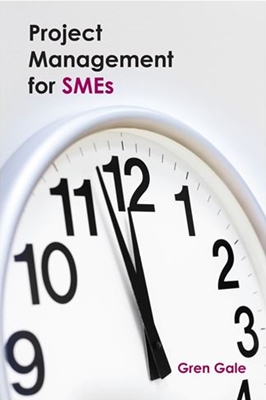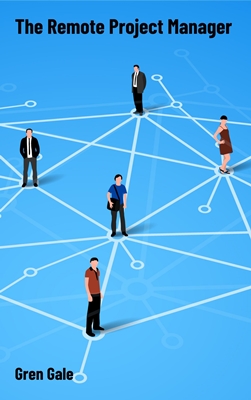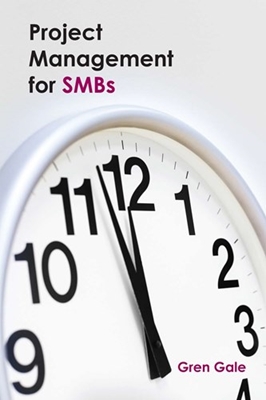If you’re going to make flexible, hybrid or full remote teams work then you need to fully understand the issues with the lack of non-verbal communication that working over video or audio links brings. It’s really easy to ignore these and just carry on as if people were sitting next to each other, but these things really matter when you’re aiming to build a productive team.
Total Communication
Communication consists of far more than the words that come out of your mouth. When you speak you move your hands, body, eyes and head continuously. As described by Michael Argyle in The Psychology of Interpersonal Behavior, all of these movements are closely coordinated with your speech and form the total communication.
Body language has been around for as long as Homo Sapiens and spoken words for between 50 and 100 thousand years, so we’ve had plenty of practice at both working in harmony. After Alexander Graham Bell patented the first telephone in 1876 we’ve barely had 150 years to adapt to using words without body language, so it’s hardly surprising that we’re not very good at it.
Non-verbal communication represents 65% of all communication
Ray L Birdwhistell an American anthropologist estimated from his research that non-verbal communication represents 65 percent of all communication and more astonishingly that we can make and recognise around 250,000 facial expressions. Barbara and Allan Pease in The Definitive Book of Body Language further estimated that body language is responsible for between 60 and 80 percent of the impact made in negotiations and that people form 60 to 80 percent of their first impression about a new person in less than four minutes.
Research by psychologists at Harvard University also showed how women are far better readers of non-verbal communication than men. The researchers showed short films of a man and woman communicating with the soundtracks removed and asked the subjects to work out what they were talking about. The women read the situation correctly 87 percent of the time, while the men scored only 42 percent.
All of these non-verbal communication clues are lost in a voice-only meeting and many are lost or are considerably depreciated in a videoconference. This represents a huge loss in the richness and effectiveness of communication. As a result the potential for misunderstandings or misinterpretations is huge. You need to be fully aware of the impact of separating verbal and non-verbal communication. This won’t be obvious to you of course, you’ll still be pulling the usual expressions and doing the subtle stuff your face and body does when you communicate face-to-face but no-one else will be seeing much of it.
Non-verbal communication can consist of:
- Facial expressions
- Gaze and eye contact
- Eye expression – pupil dilation, blink rate, direction of gaze, degree of opening of the eyes and facial expression specifically in the eye area
- Gestures
- Posture
- Touch and smell
- Appearance
All of these convey a huge amount of information in addition to speech.
Facial expressions transmit emotion and social signals

This has been an area of detailed research by a number of eminent psychologists over the last fifty or more years. Argyle and Ingram in 1972 showed that when we communicate we look at each other frequently. We tend to make eye contact more when we’re listening than talking (Exline and Winters 1965) and other studies have shown we make more eye contact with people we like and that eye contact is related to power. High power individuals maintain high levels of eye contact while both talking and listening (Ellyson, Dovido and Fehr 1981). There is of course no eye contact in an audioconference and our natural eye contact routine becomes to say the least heavily distorted in a videoconference.
Important information like approval and disapproval, happiness and anger or even surprise can be misjudged or lost without these non-verbal communication clues.
Non-verbal communication in building personal relationships
You must have found that you can get on with some people instantly whereas others seem much harder. This is often more because of the subtle workings of body language than what is actually being spoken. One study by Argle, Salter, Nicholson, Williams and Burgess in 1970 showed that non-verbal communication had five times as much influence on inter-personal relationships than did verbal.
Gestures and eye contact
Gestures of course can also transmit a lot of information and this varies from country to country. For instance Italians have a tradition of making use of hand and arm movements in expressing themselves whereas the English tend to be more reserved. Voice itself can lead to assumptions about culture, social class, competence and personality type. Eye contact is also highly connected to culture. For example, while good eye contact is praised and usual in the US and Europe, it can be seen as a sign of disrespect and challenge in other cultures, including Asian and African.
When to interrupt?

Knowing when to speak on an audio-only call is also more difficult. When someone is speaking their body language gives off clues that say they don’t want to be interrupted. The person interrupting also tends to provide a thank you or sorry in their body language when they interrupt. I worked on a project where I was the only remote attendee at meetings that were led by a senior manager who had a habit of pausing for thought mid-sentence before continuing to talk. The people in the room were getting body language signals that he was going to continue. I was on an audio-only link and found it very difficult to know when to break in. People also use body language to show they’d like to interrupt. Arms waving, body leaning forwards or head nodding as well as facial and eye expression can all indicate that you want to break into the conversation, most of which can be lost in a video call.
Research by Rutter and Stephenson in 1977 indicated the impact of this lack of non-verbal communication clues. It showed that there are fewer interruptions in audio conferences than when people meet face-to-face. Adding to this is the limitation that conversation on a video call isn’t truly duplex. When one person talks everyone else has to shut up and wait their turn which makes communication very stilted. Because of the way the internet works where everything transmitted is first split up into packets, there is an almost unavoidable delay in video calls as everything is chopped up and then reassembled in real time also making interruption a little more fraught.
When the lack of body language can be positive
In some situations, the lack of body language can work to your advantage. For instance, if you feel you have a very good case, it may be better to negotiate in audio-only because research shows that the person with the best case tends to win in audio-only negotiations. Face-to-face people have more of a tendency to be influenced by wanting the non-verbal feedback of approval and this can influence who wins the argument.
Uncertainty and insecurity
With this impaired sense of communication you can find yourself wondering ‘did I just say something I shouldn’t have?’, ‘did she really understand what I meant?’ , ‘Am I making an impact?’. I’ve also found in this arms-length environment that working out that people are becoming unhappy with you is a lot more difficult than you might think and clearly this can lead to very dangerous situations. Insecurities and misunderstandings can result, so you have to be a lot clearer and more careful when you express yourself and sometimes ask questions that you might have thought superfluous face-to-face. It’s a good idea to confirm agreement or understanding of the key points discussed, at the end of a meeting. As a result you are likely to find it more difficult to work out how you’re being viewed by people you interact with remotely, particularly over audio-only links. I’ve certainly found this.
Perhaps the worst situation is being a remote attendee at an office-based meeting. You can’t pick up the body language and non-verbal communication clues but all of the other attendees can, putting you at a definite disadvantage.
Conclusion
So be aware of what you are losing from the lack of or impairment of non-verbal communication in both audio and videoconferences. You can try to devise strategies to compensate however you’ll never fully make up for what you lose. While people in a fully remote environment inevitably and eventually adapt, the obvious way of trying to counter this is to meet face-to-face. It’s surprising how quickly people can start to understand each other from even a single meeting face-to-face. We advocate for flexible work which removes offices as the centre of gravity for work, but promotes meeting for a purpose and meeting face-to-face as essential parts of working life.
Gren Gale is a consultant and speaker in Remote Work and Project Management and has been named as one of the top 19 Key Opinion Leaders globally in remote work in Who’s Who in Remote Working? and and one of the top 50 Project Management Leaders worldwide by Leaders Hum He is author of the Remote Project Manager and The Hybrid Work Disaster.
Articles and reviews on this site are written from an unbiased viewpoint. We only review products which are relevant to Remote Work or Project Management and ones we believe in. Once this article on non-verbal communication was written we looked to see if some of the links could generate affiliate income. It won’t make us rich but it helps pay the rent!









Recent Comments